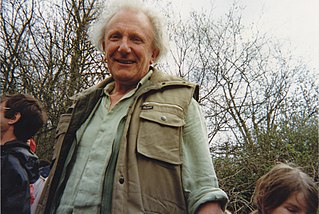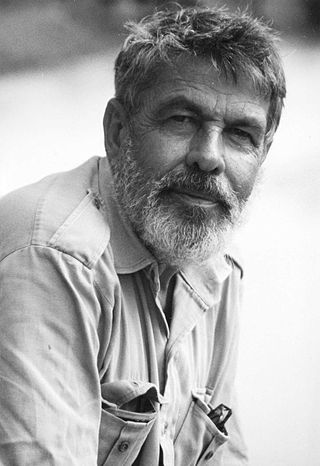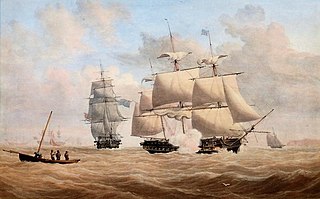Derbyshire Wildlife Trust is one of 46 local Wildlife Trusts around the UK working to promote and protect local wildlife. It covers the whole of Derbyshire and was founded in 1962 in response to environmental threats to the local countryside, since when it has continued to grow. The trust is now based at East Mill on the River Derwent in the town of Belper, Derbyshire. It is a registered charity, supported by more than 14,000 members and over 500 volunteers.

A nature reserve is a protected area of importance for flora, fauna, funga, or features of geological or other special interest, which is reserved and managed for purposes of conservation and to provide special opportunities for study or research. They may be designated by government institutions in some countries, or by private landowners, such as charities and research institutions. Nature reserves fall into different IUCN categories depending on the level of protection afforded by local laws. Normally it is more strictly protected than a nature park. Various jurisdictions may use other terminology, such as ecological protection area or private protected area in legislation and in official titles of the reserves.

The conservation status of a group of organisms indicates whether the group still exists and how likely the group is to become extinct in the near future. Many factors are taken into account when assessing conservation status: not simply the number of individuals remaining, but the overall increase or decrease in the population over time, breeding success rates, and known threats. Various systems of conservation status are in use at international, multi-country, national and local levels, as well as for consumer use such as sustainable seafood advisory lists and certification. The two international systems are by the International Union for Conservation of Nature (IUCN) and The Convention on International Trade in Endangered Species of Wild Fauna and Flora (CITES).

Richard David Shepherd CBE FRSA FGRA was a British artist and one of the world's most outspoken conservationists. He was most famous for his paintings of steam locomotives and wildlife, although he also often painted aircraft, portraits and landscapes. His work has been extremely popular since the 1960s in limited edition print reproduction and poster form, as well as other media such as Wedgwood limited edition plates. He published five books about his art, including an autobiography.

Tony Charles (Mashesha) Pooley (1938–2004) was a South African naturalist, award-winning conservationist and one of the world's foremost authorities on the Nile crocodile.

Wildlife Warriors, originally called the Steve Irwin Conservation Foundation, is a conservationist organization that was established in 2002 by Steve Irwin and his wife Terri, to involve and educate others in the protection of injured, threatened or endangered wildlife. Terri is still involved in the organization as patron and significant advisor.

Anthony Tudor St John, 22nd Baron St John of Bletso is a British peer, politician, businessman and solicitor. He is one of the ninety hereditary peers elected to remain in the House of Lords after the House of Lords Act 1999. He speaks on African affairs, deregulation, financial services and information technology. Rather than aligning with a particular political party, he remains a crossbencher.

Newquay Zoo is a zoological garden located within Trenance Leisure Park in Newquay, England. The zoo was opened in Cornwall on Whit Monday, 26 May 1969 by the local council. It was privately owned by Mike Thomas and Roger Martin from 1993 until 2003. In August 2003 Stewart Muir became the new Director and the zoo became part of the Whitley Wildlife Conservation Trust, alongside Paignton Zoo and Living Coasts. The zoo is part of a registered charity, and was awarded various South West and Cornwall 'Visitor Attraction of The Year' and 'Sustainable Tourism' awards for excellence in 2006, 2007 and 2008. Newquay Zoo is now run as part of the Wild Planet Trust, the new name for the Whitley Wildlife Conservation Trust.

Mark Stoddart is a Scottish sculptor and furniture designer. He is known for his glass topped coffee and dining tables which incorporate bronze sculptures. Having had a difficult schooling until his severe dyslexia was picked up, he has become an ambassador for those affected by the condition.

St George's Cathedral is the Anglican cathedral in Cape Town, South Africa, and the seat of the Archbishop of Cape Town. St. George's Cathedral is both the metropolitical church of the Anglican Church of Southern Africa and a congregation in the Diocese of Cape Town.

The World Wide Fund for Nature (WWF) is a Swiss-based international non-governmental organization founded in 1961 that works in the field of wilderness preservation and the reduction of human impact on the environment. It was formerly named the World Wildlife Fund, which remains its official name in Canada and the United States. WWF is the world's largest conservation organization, with over five million supporters worldwide, working in more than 100 countries and supporting around 3,000 conservation and environmental projects. They have invested over $1 billion in more than 12,000 conservation initiatives since 1995. WWF is a foundation with 65% of funding from individuals and bequests, 17% from government sources and 8% from corporations in 2020.

Eric V. Goode is an American entrepreneur, conservationist, and Emmy nominated filmmaker. He is known as the creator of the art nightclub Area, numerous hotels and restaurants, including the Bowery Hotel, the Waverly Inn, and the Hotel El Roblar in Ojai, CA. Goode is also known for being the founder of the Turtle Conservancy and Goode Films, which produced Tiger King.

The Nature Conservancy of Canada (NCC) is a private, non-profit, charitable nature conservation and restoration organisation based in Canada. Since its founding in 1962, the organisation and its partners have protected 15,000,000 hectares of land and water across Canada, which includes the natural habitat of more than a quarter of the country’s endangered species. With offices in each province, NCC works at a local level with stakeholders and partners to secure parcels of land.

Conor Matthew Mccreedy is a contemporary artist, conservationist and collector based in Switzerland. In his work, his depiction of abstraction is linked to chaos theory. The colour blue is prominent in his works.
The Wildlife Conservation Network (WCN) is a United States-based 501(c)(3) non-profit organization that protects endangered wildlife by supporting conservationists in the field who promote coexistence between wildlife and people. WCN does this by providing its partners with capital, strategic capacity-building services, training, and operational support. WCN has been given a top rating amongst wildlife conservation charities, with a four star rating on Charity Navigator.
The African Wildlife Foundation (AWF) is an international conservation organization created with the aim of preserving Africa's wildlife, wild lands, and natural resources.
Alan M. Hunt is a British wildlife artist. Born in Redcar, in the northeast of England, he has been painting for nearly 60 years and is best known for his photorealism style and paintings of endangered animals.

The brothers John Cantiloe Joy, and William Joy, were English marine artists, who lived and worked together. They belonged to the Norwich School of painters, considered to be a unique phenomenon in the history of British art and the most important school of painting of 19th century England.
Thomas D. Mangelsen is an American nature and wildlife photographer and conservationist. He is most famous for his photography of wildlife in the Greater Yellowstone Ecosystem, as he has lived inside the zone in Jackson, Wyoming, for over 40 years. In 2015, he and nature author Todd Wilkinson created a book, The Grizzlies of Pilgrim Creek, featuring a grizzly bear known as Grizzly 399, named so due to her research number. He has been active in the movement to keep the Yellowstone area grizzly bears on the Endangered Species List. Mangelsen is also known for trekking to all seven continents to photograph a diverse assortment of nature and wildlife. A photograph he took in 1988 titled, "Catch of the Day" has been labeled "the most famous wildlife photograph in the world". In May 2018, he was profiled on CBS 60 Minutes. He has received dozens of accolades throughout the decades.

Smart Parks is a UK-based charity that specializes in providing aerial surveillance and monitoring services through the use of unnamed aerial vehicles (UAVs), commonly knowns as drones. The organization was founded in 2012 and launched publicly in 2013, and operates as a registered charity in the UK and a private foundation in the Netherlands. The organization was formerly named ShadowView.














